This document discusses different types of parallel computing architectures including vector architectures, SIMD instruction set extensions for multimedia, and graphics processing units (GPUs). It compares vector architectures to GPUs and multimedia SIMD computers to GPUs. It also covers loop level parallelism and techniques for finding data dependencies, such as using the greatest common divisor test.


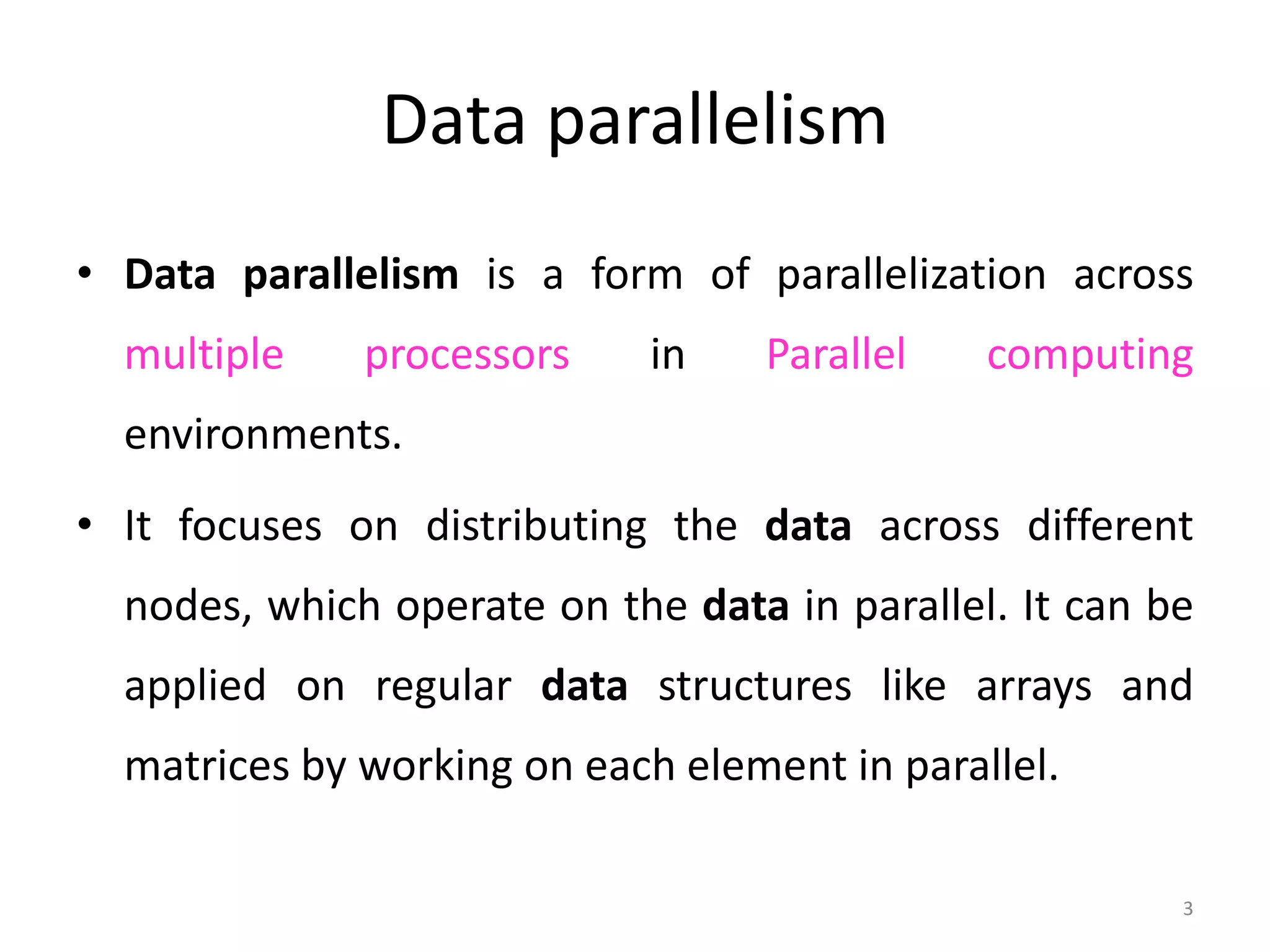
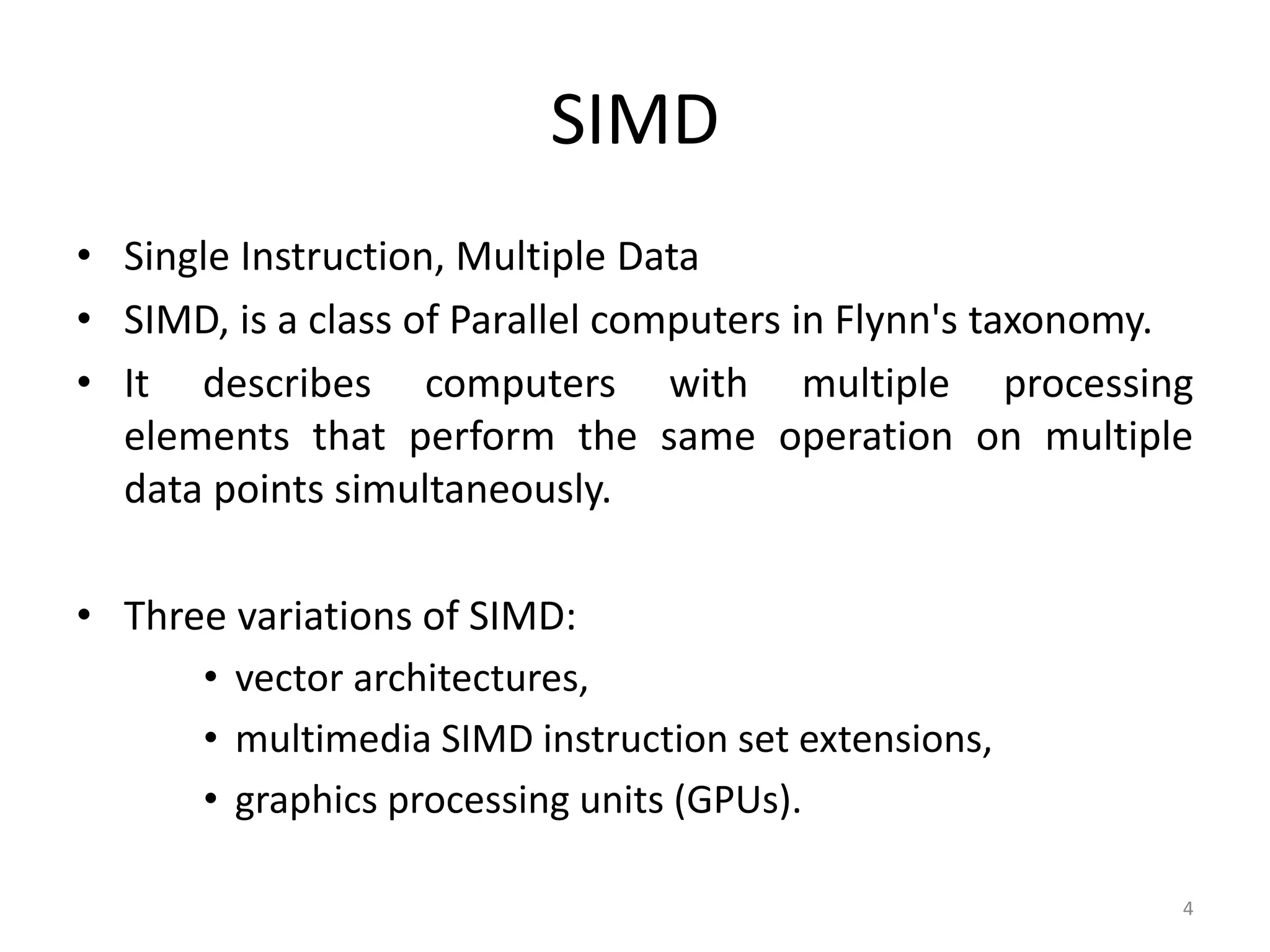
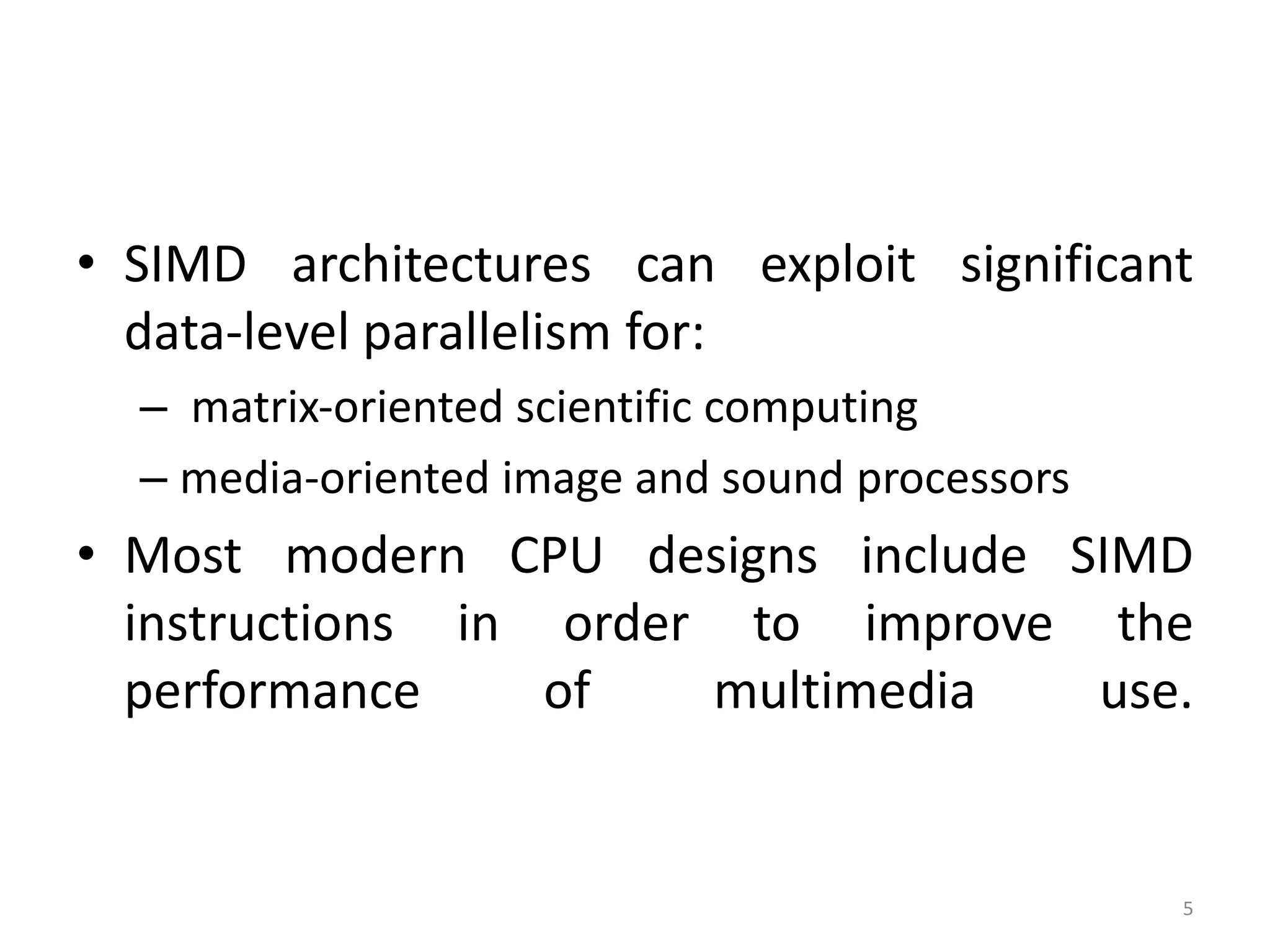
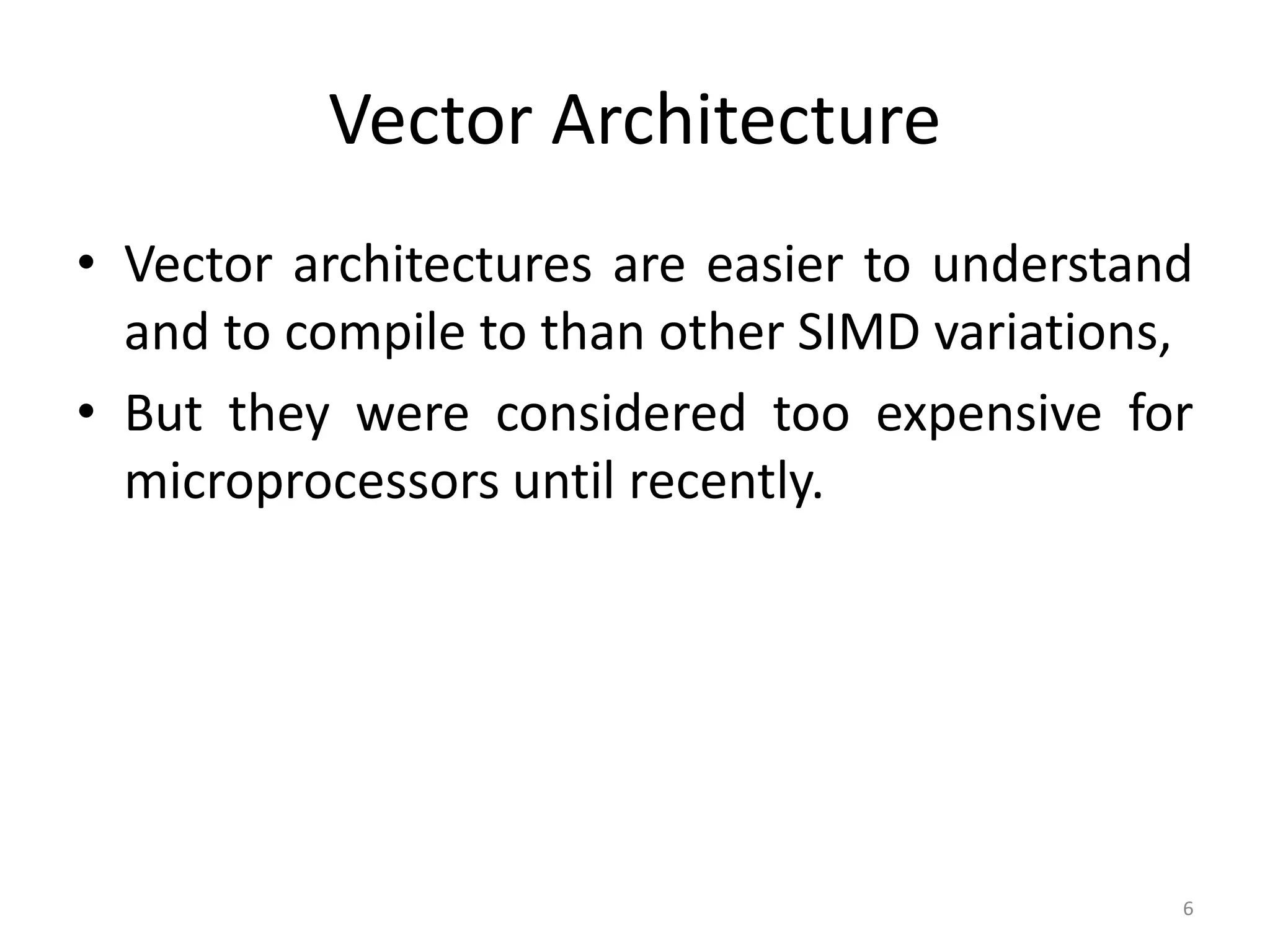
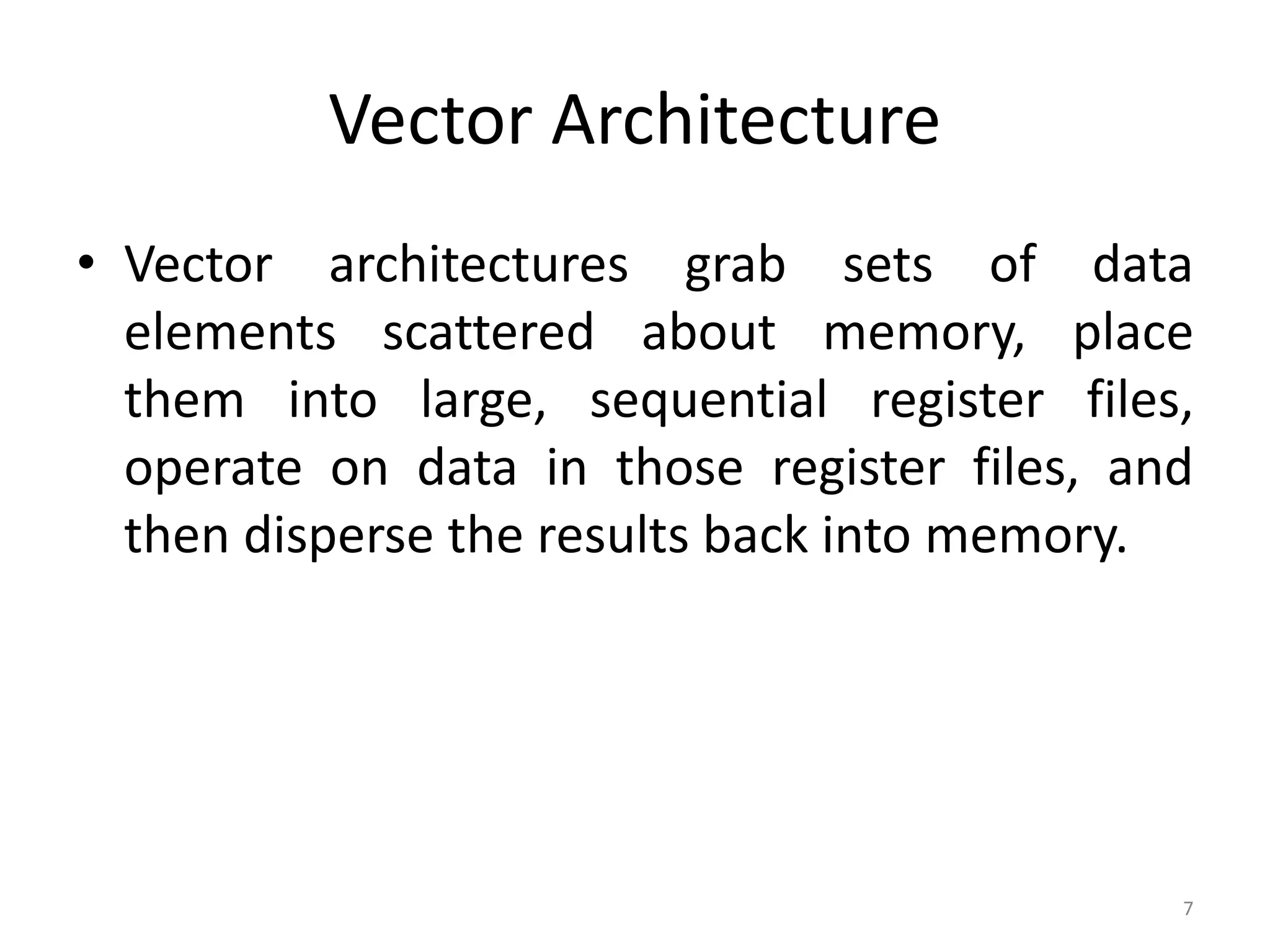
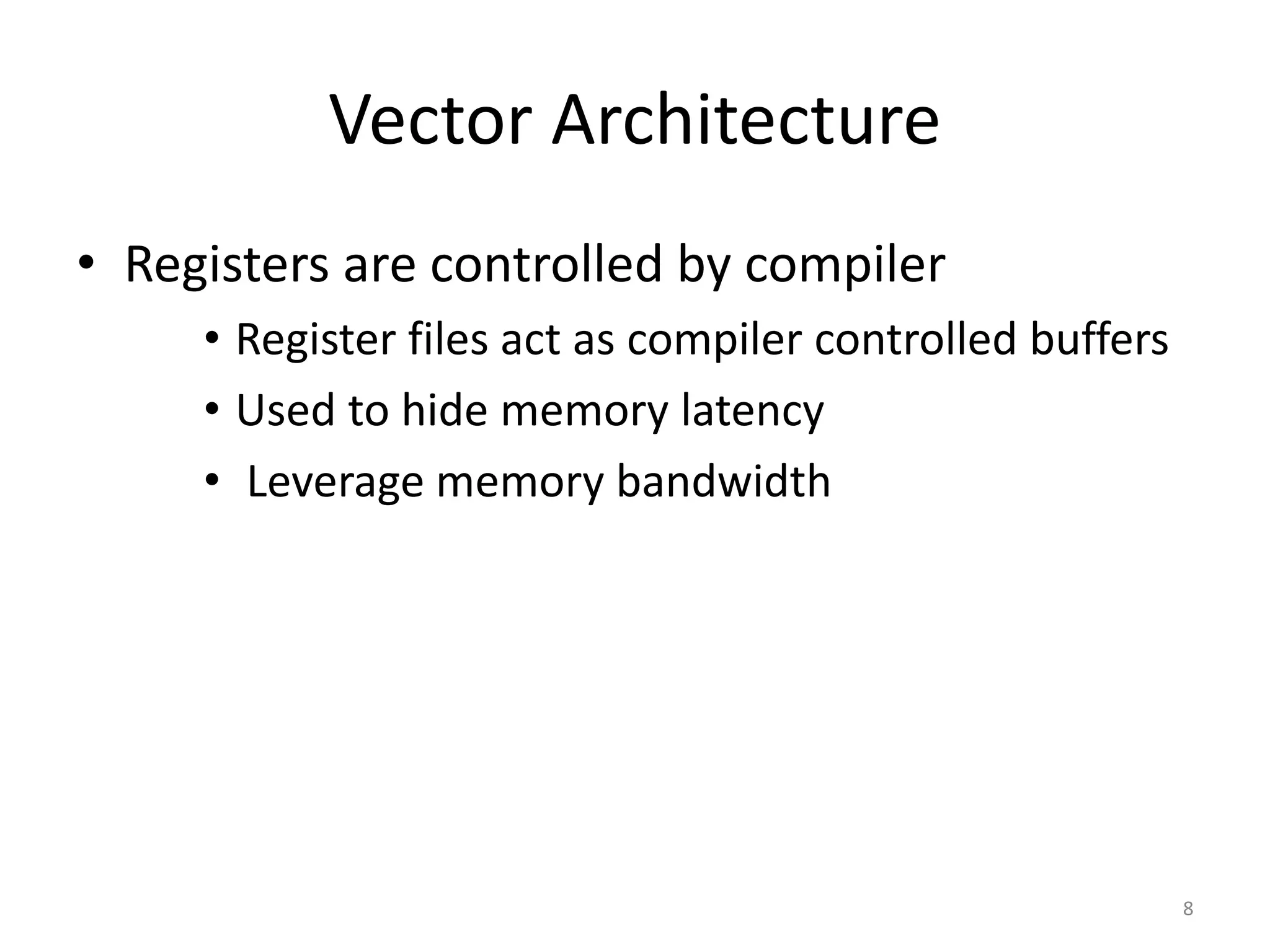

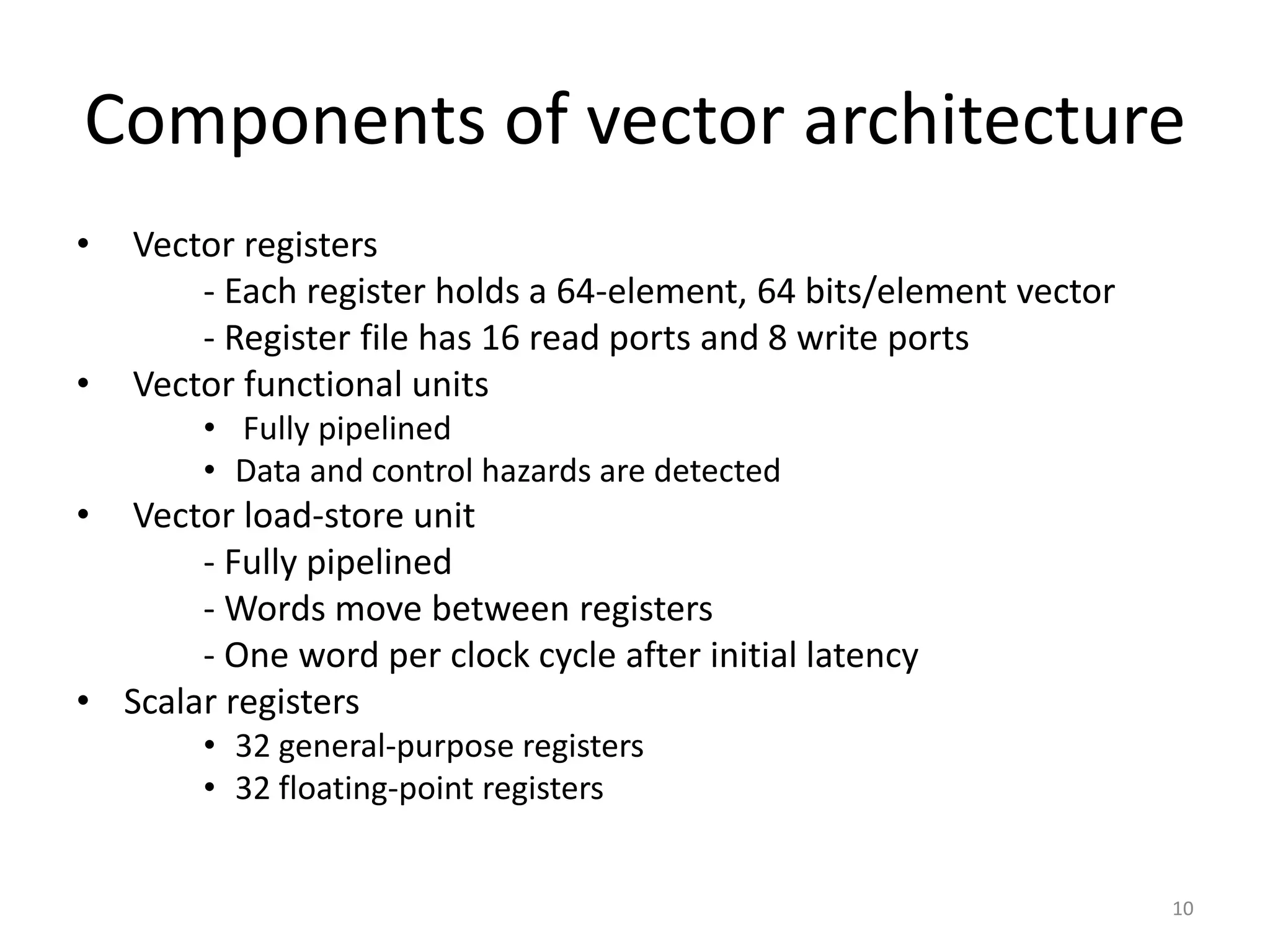
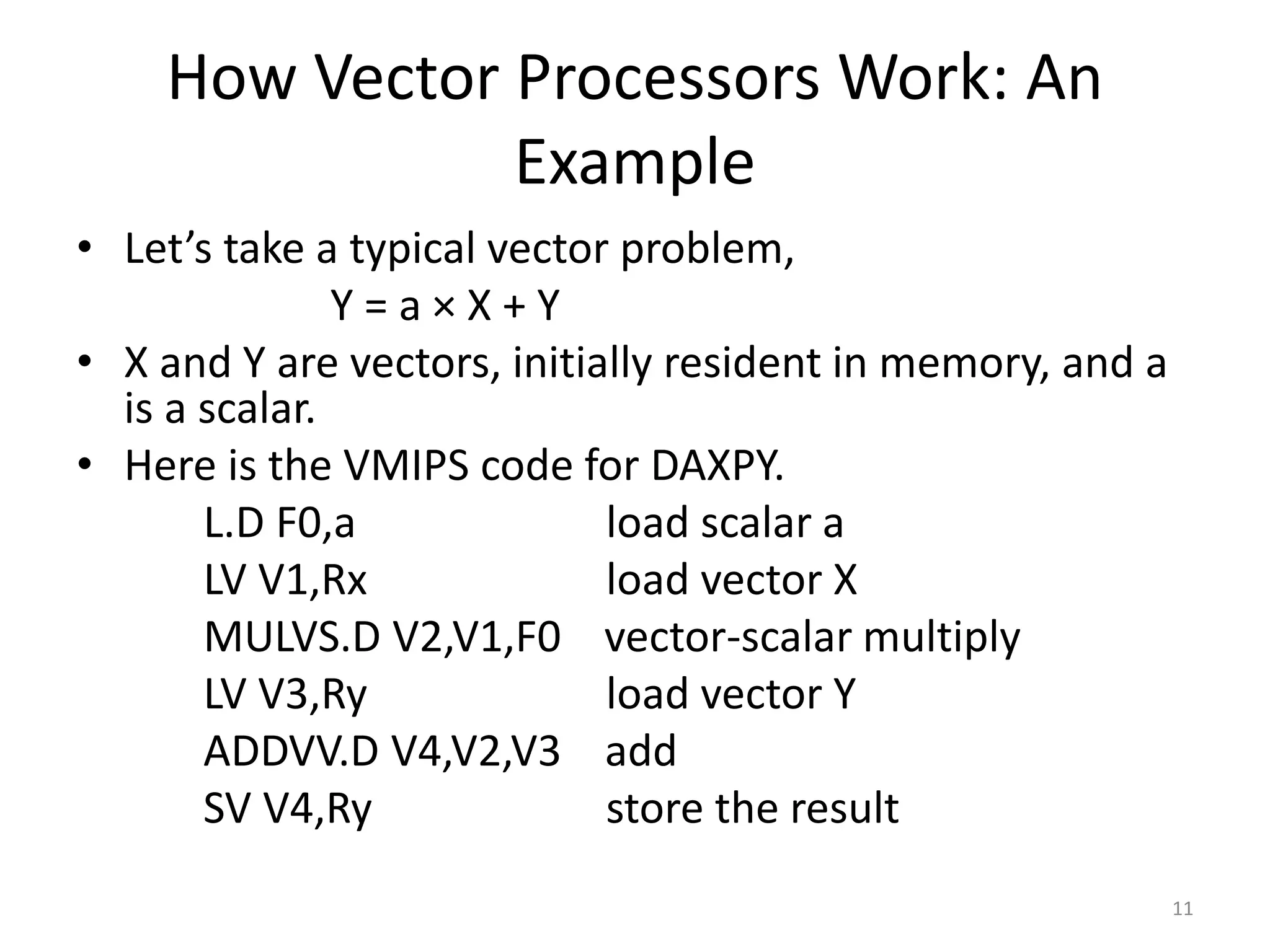

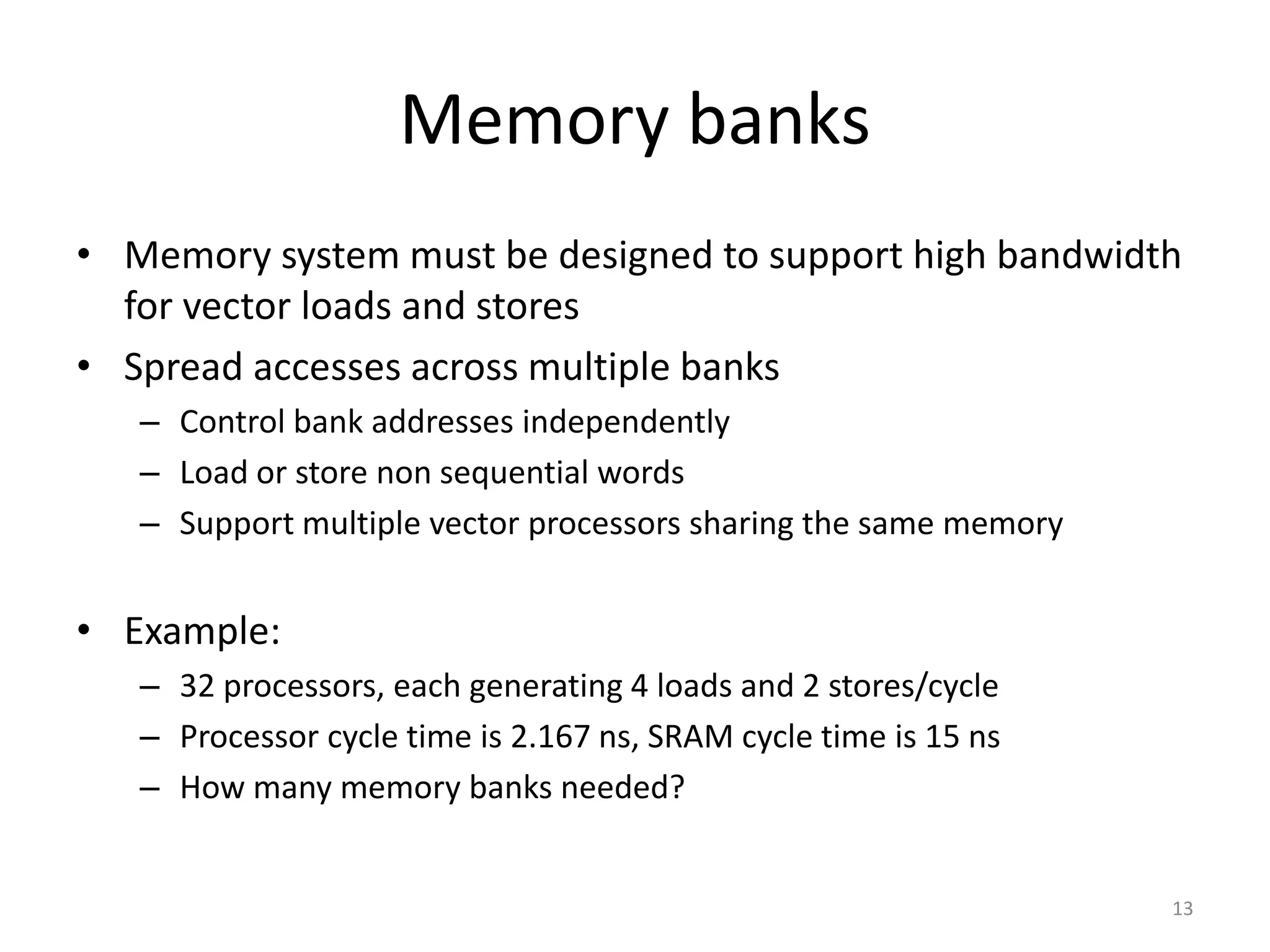
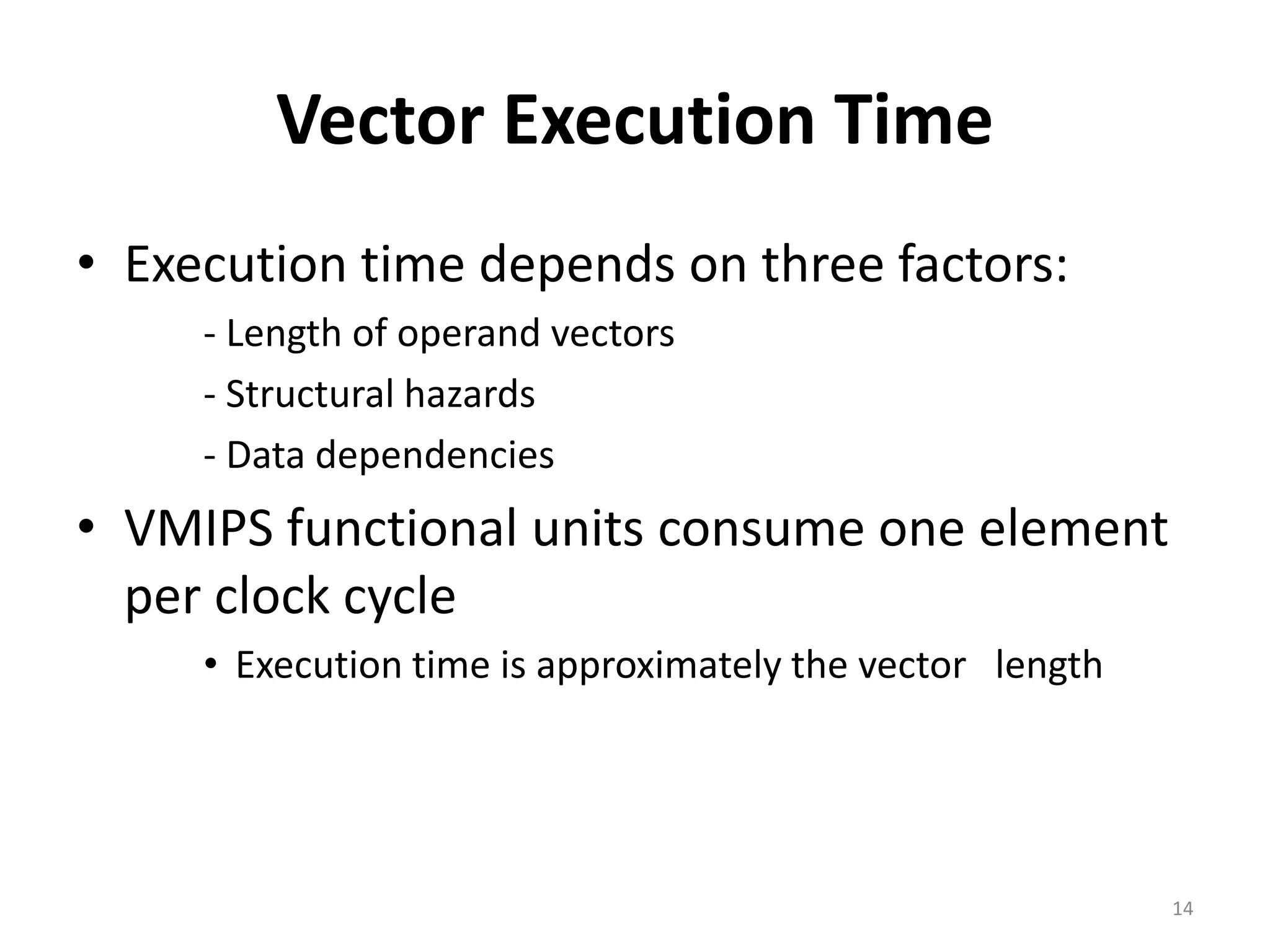
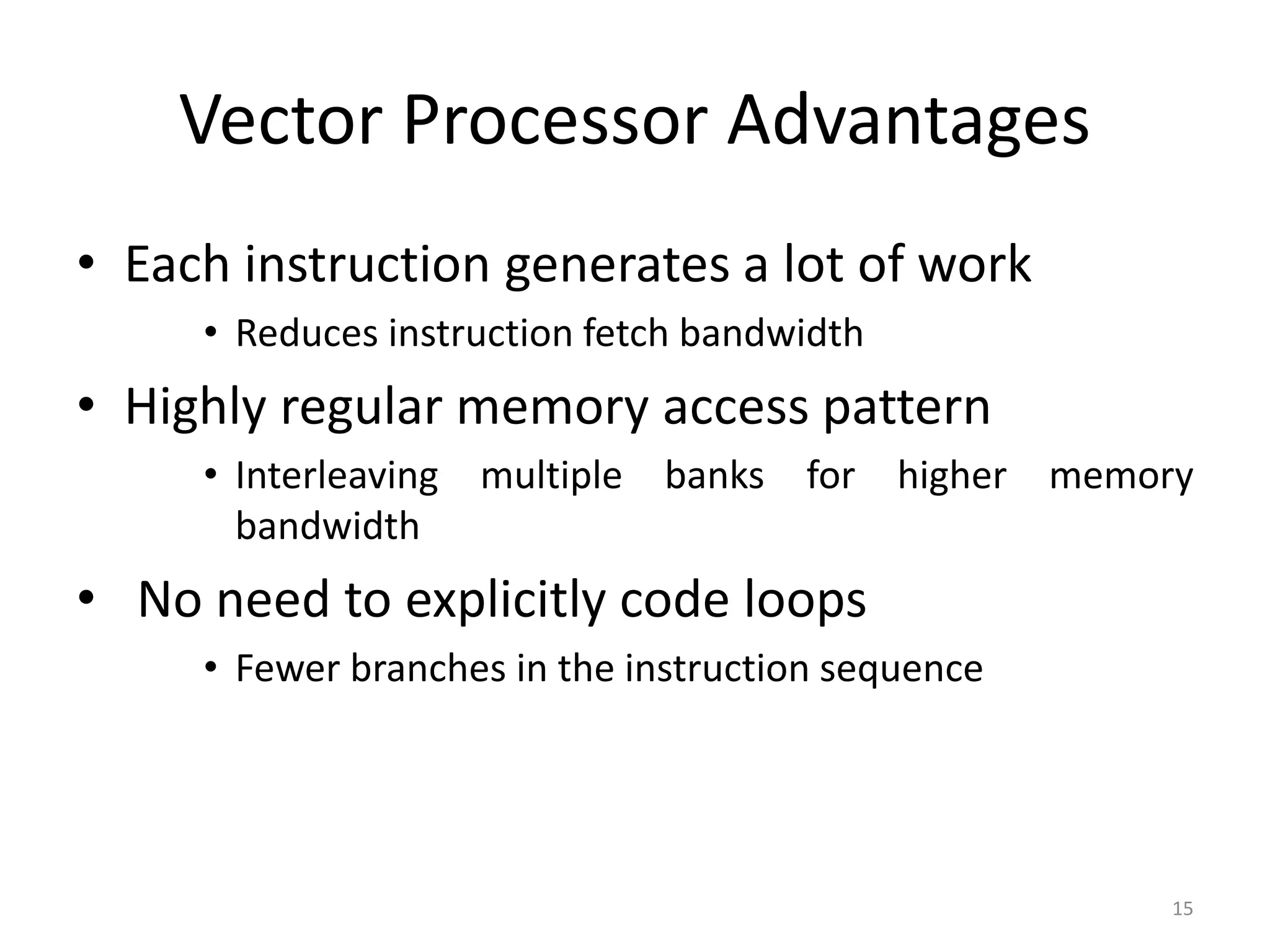
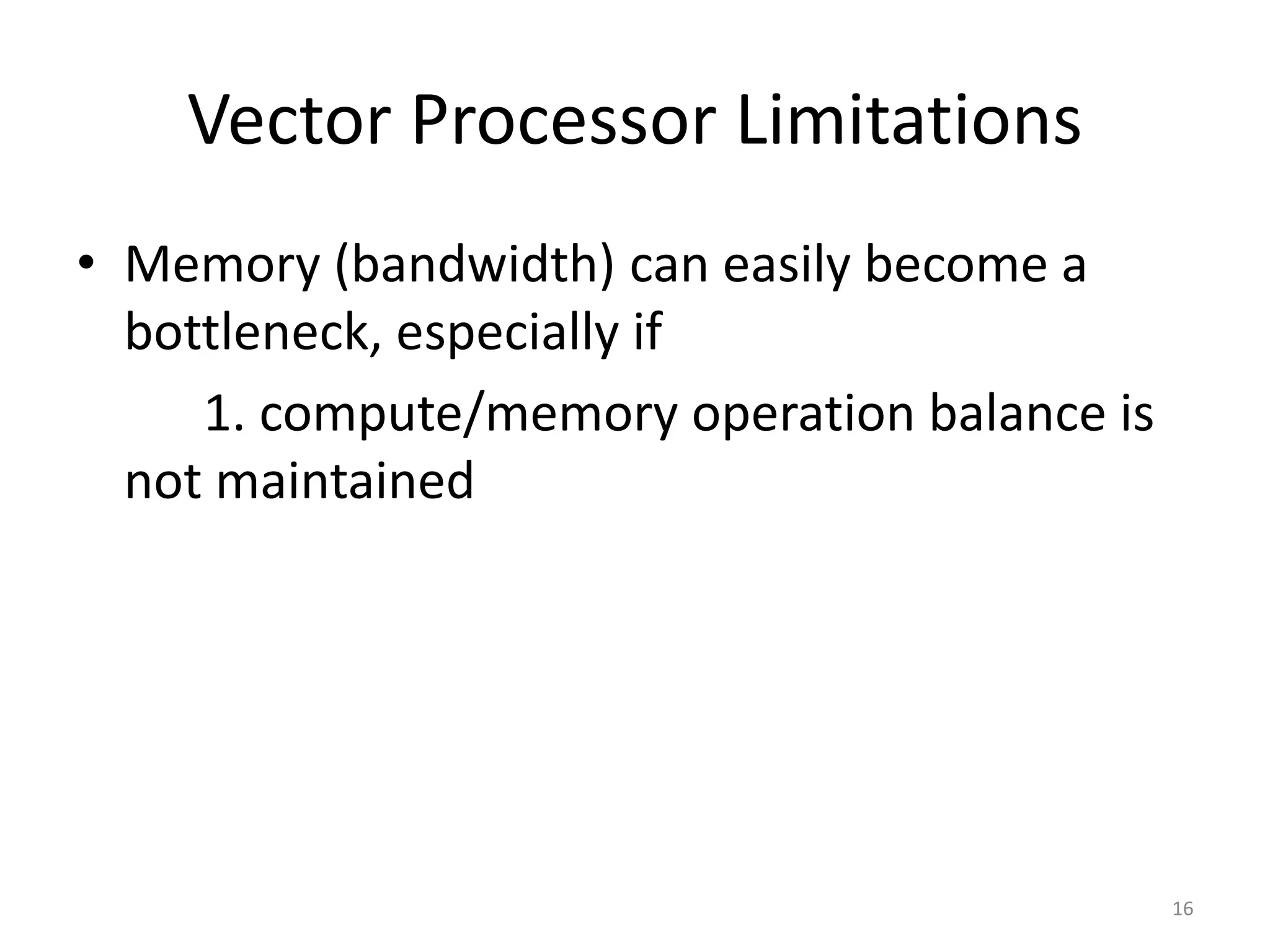
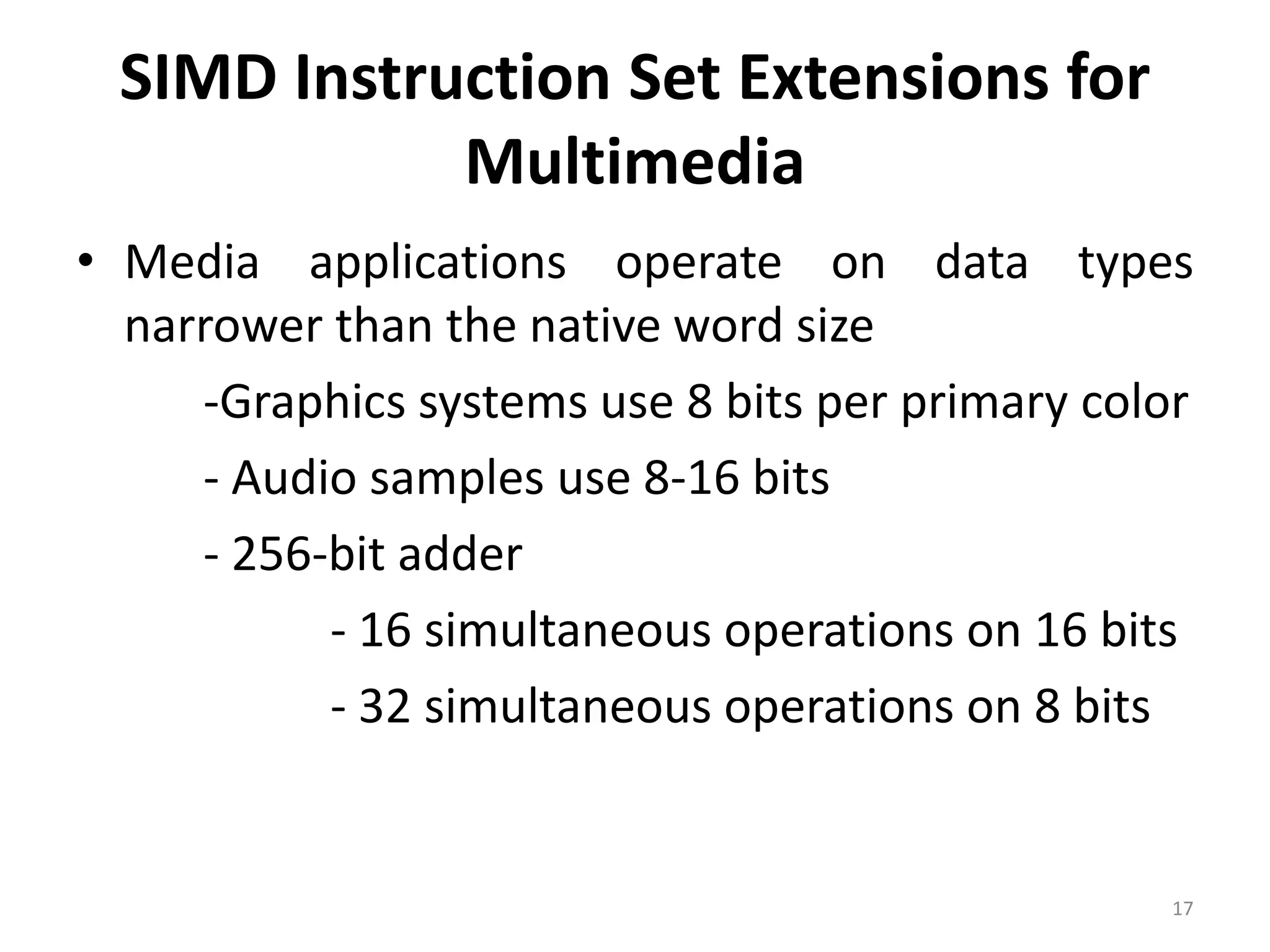
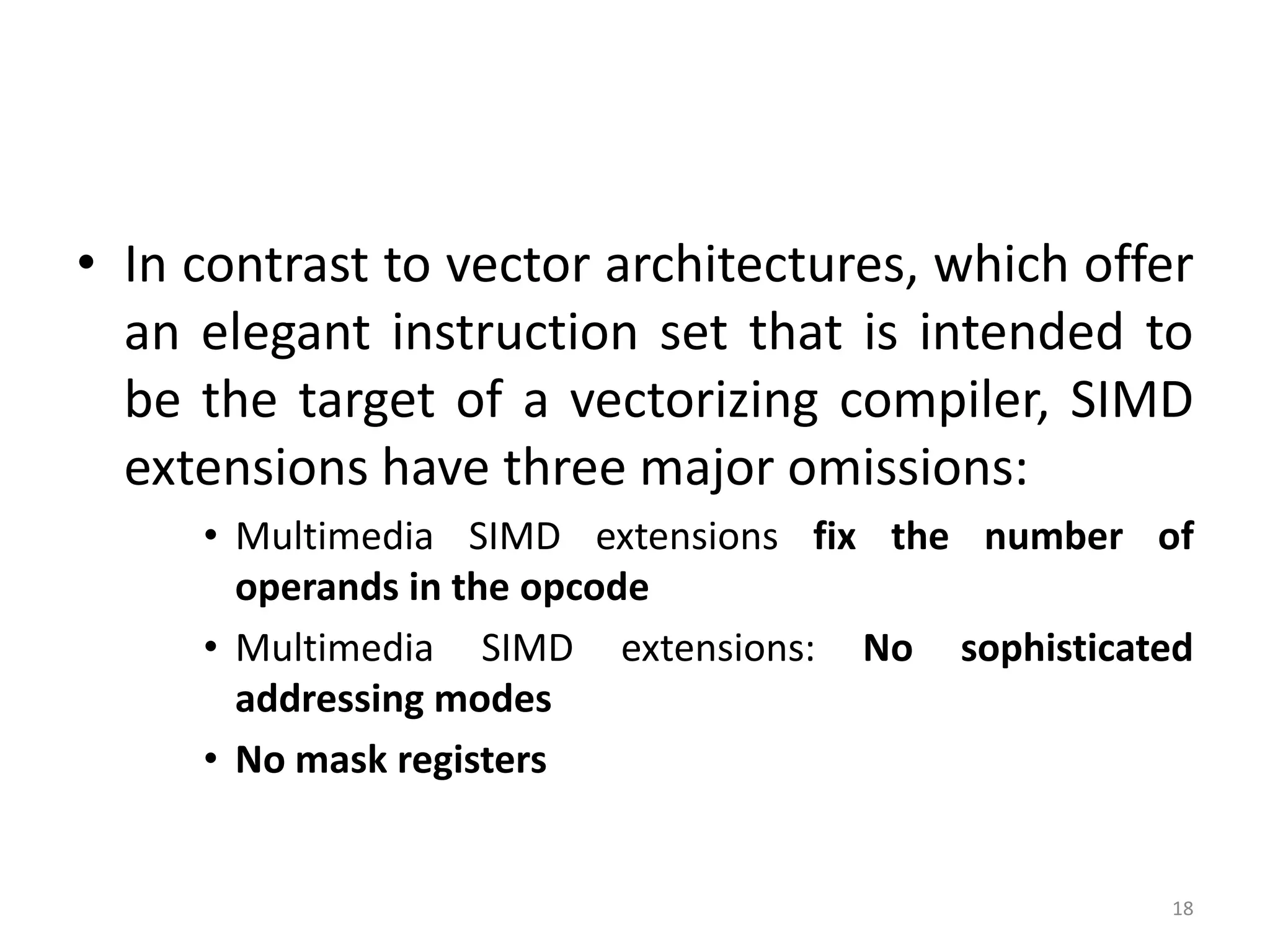
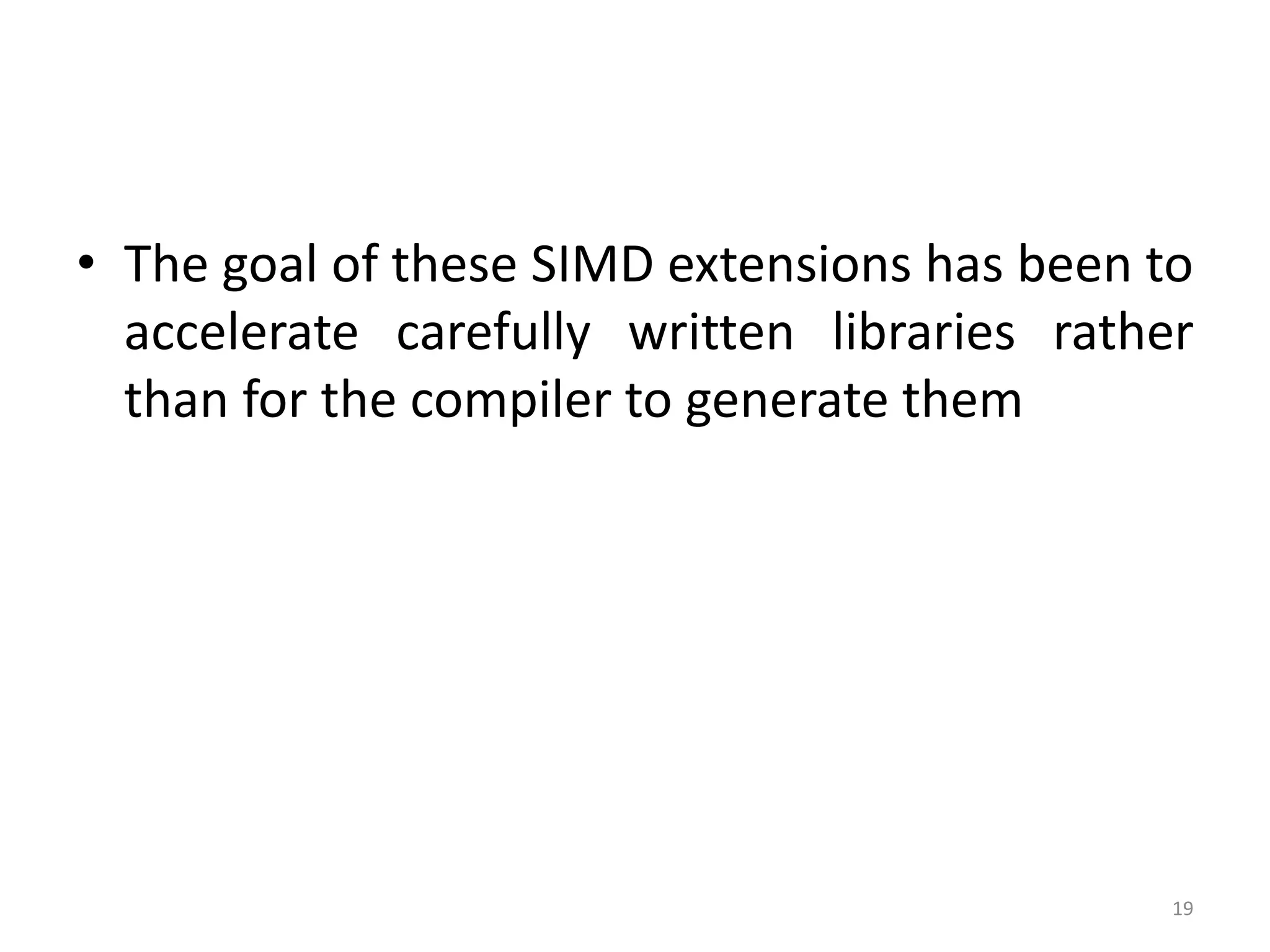
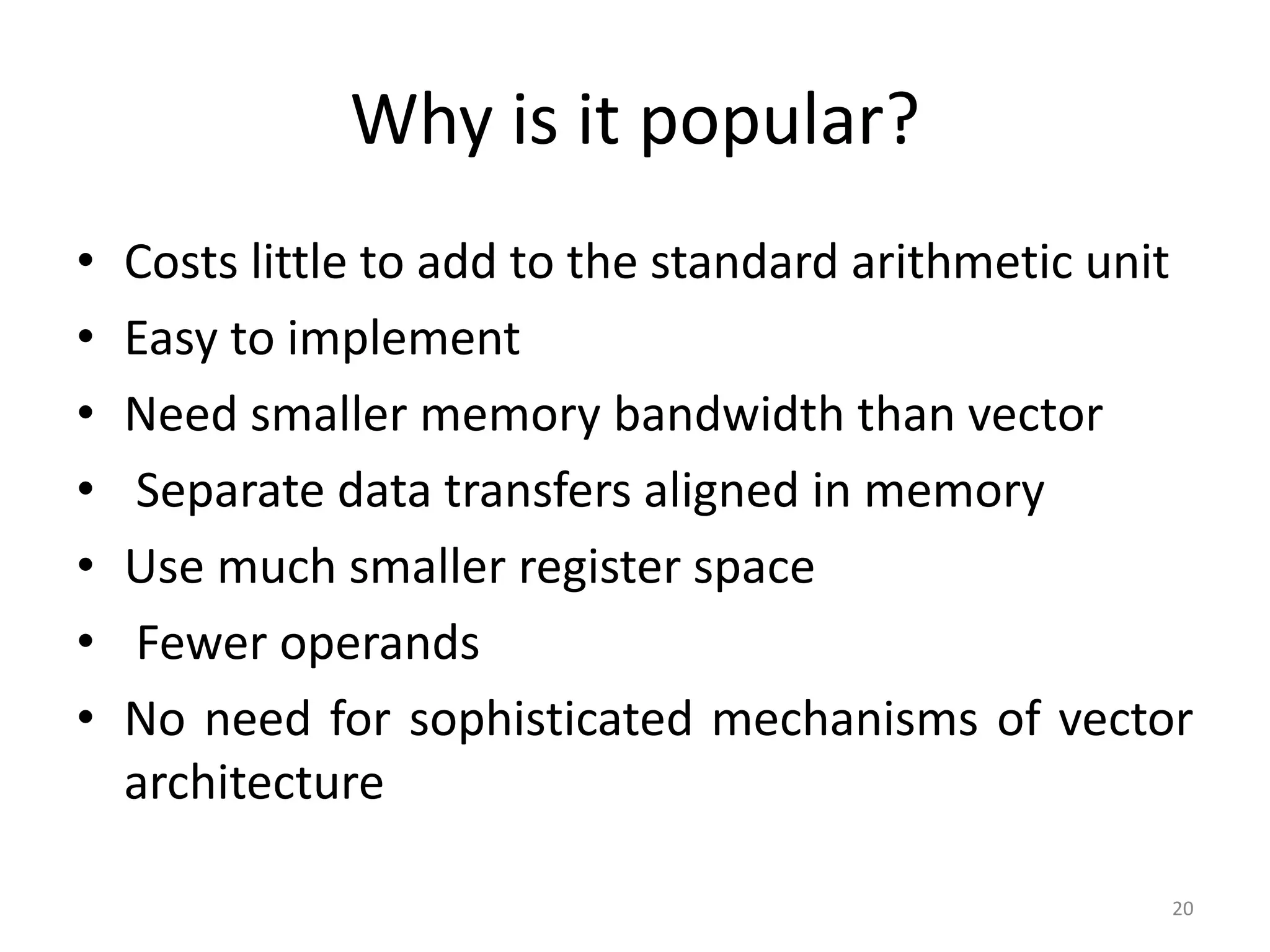
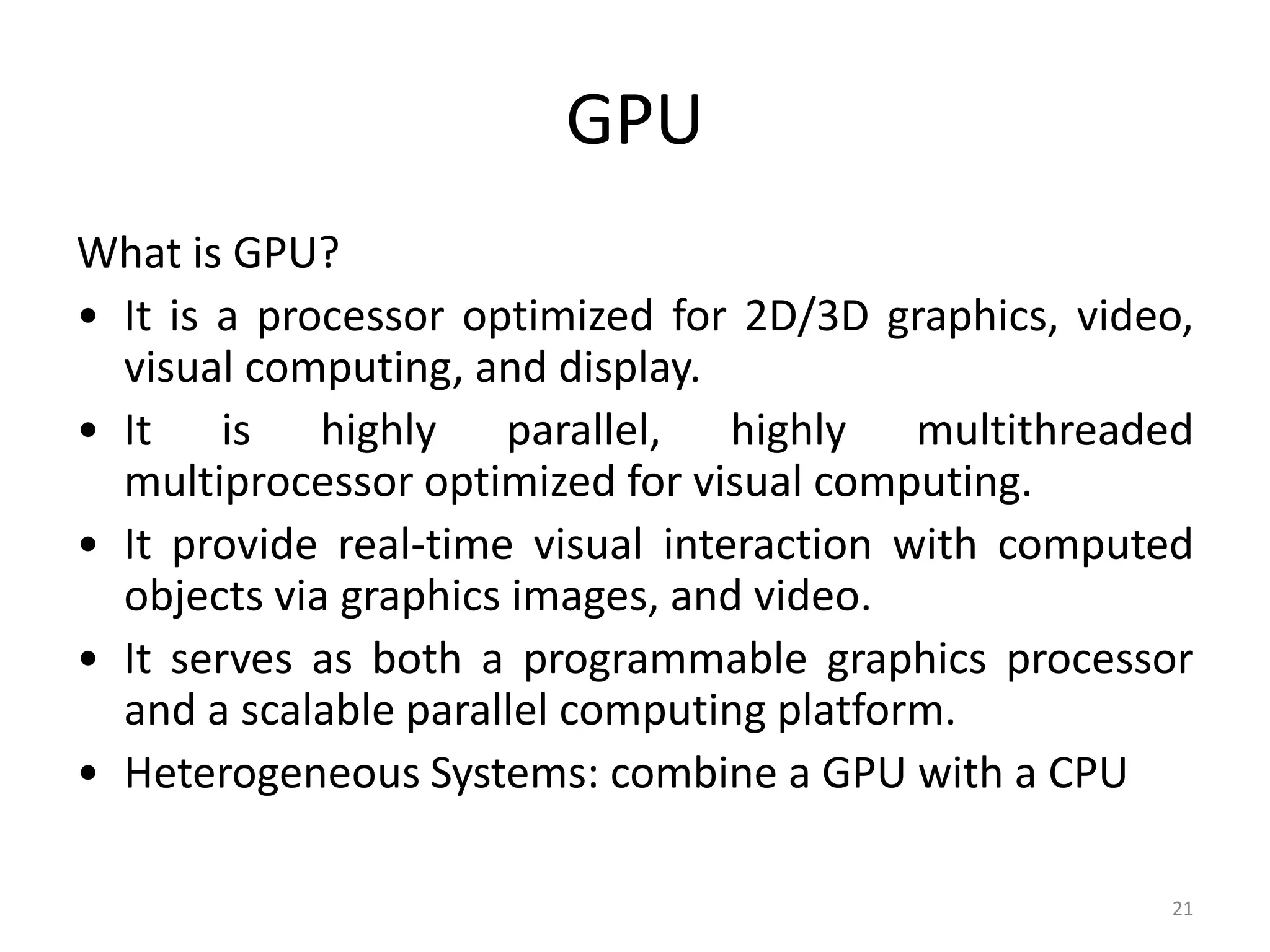

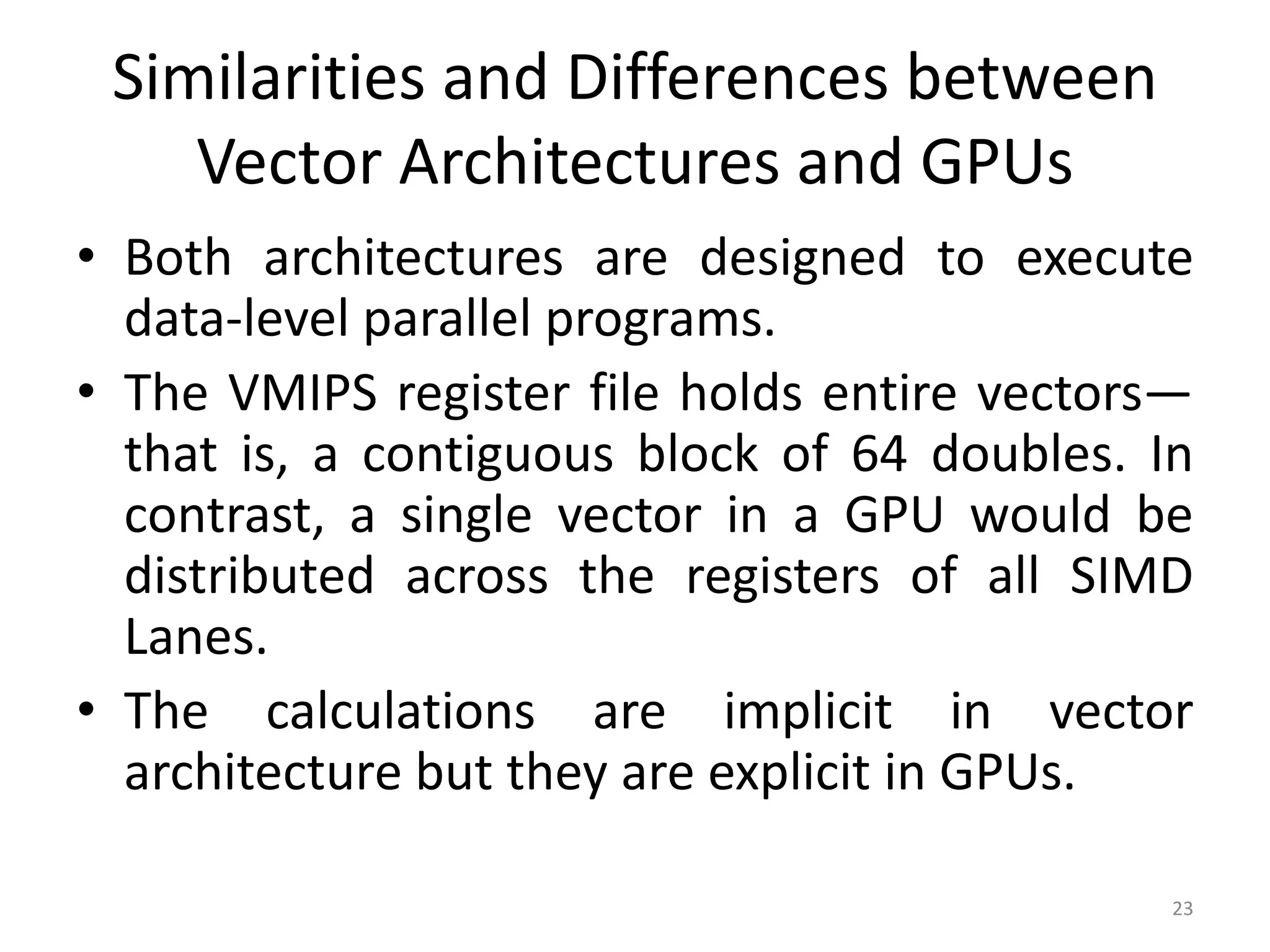

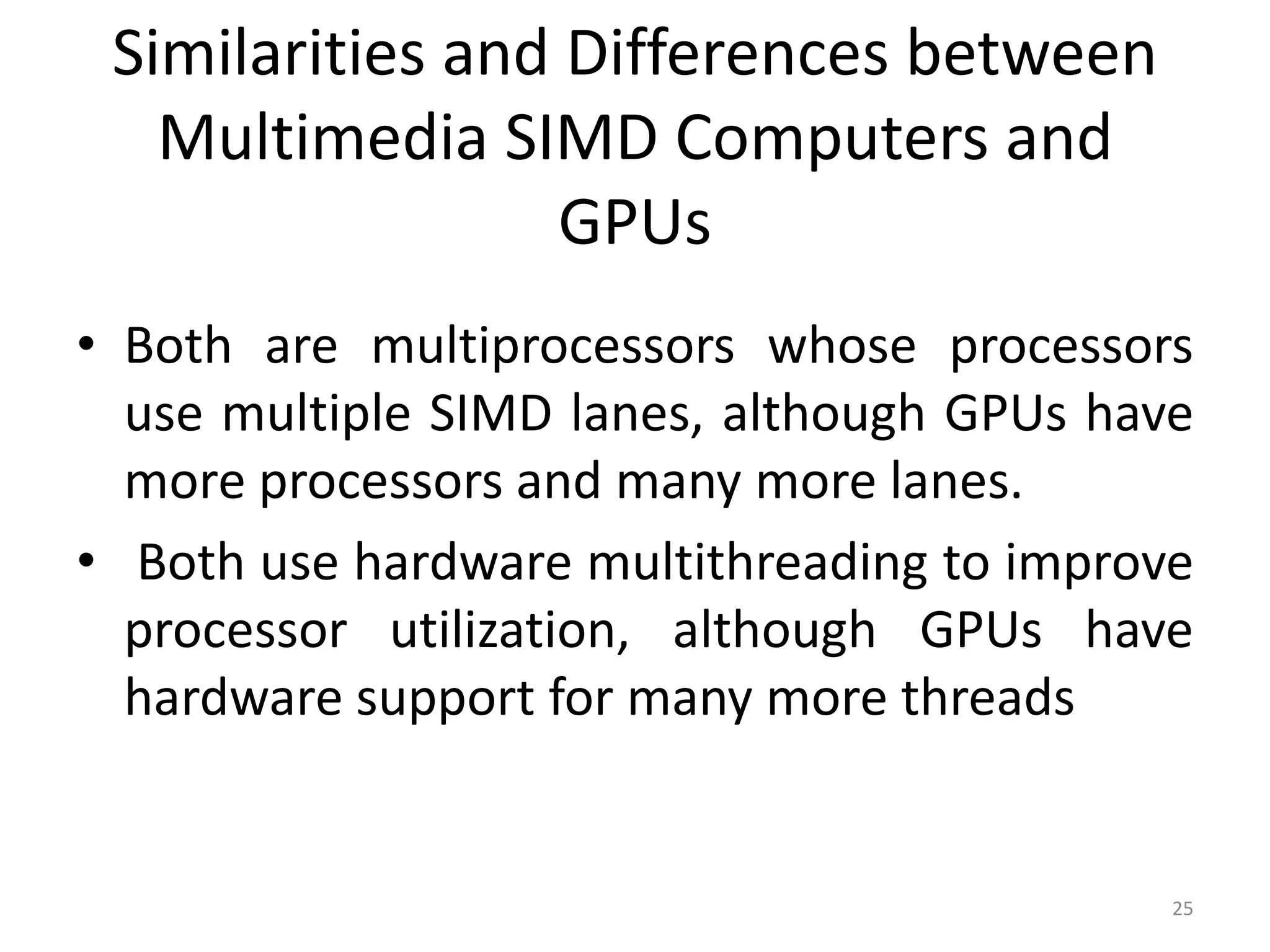
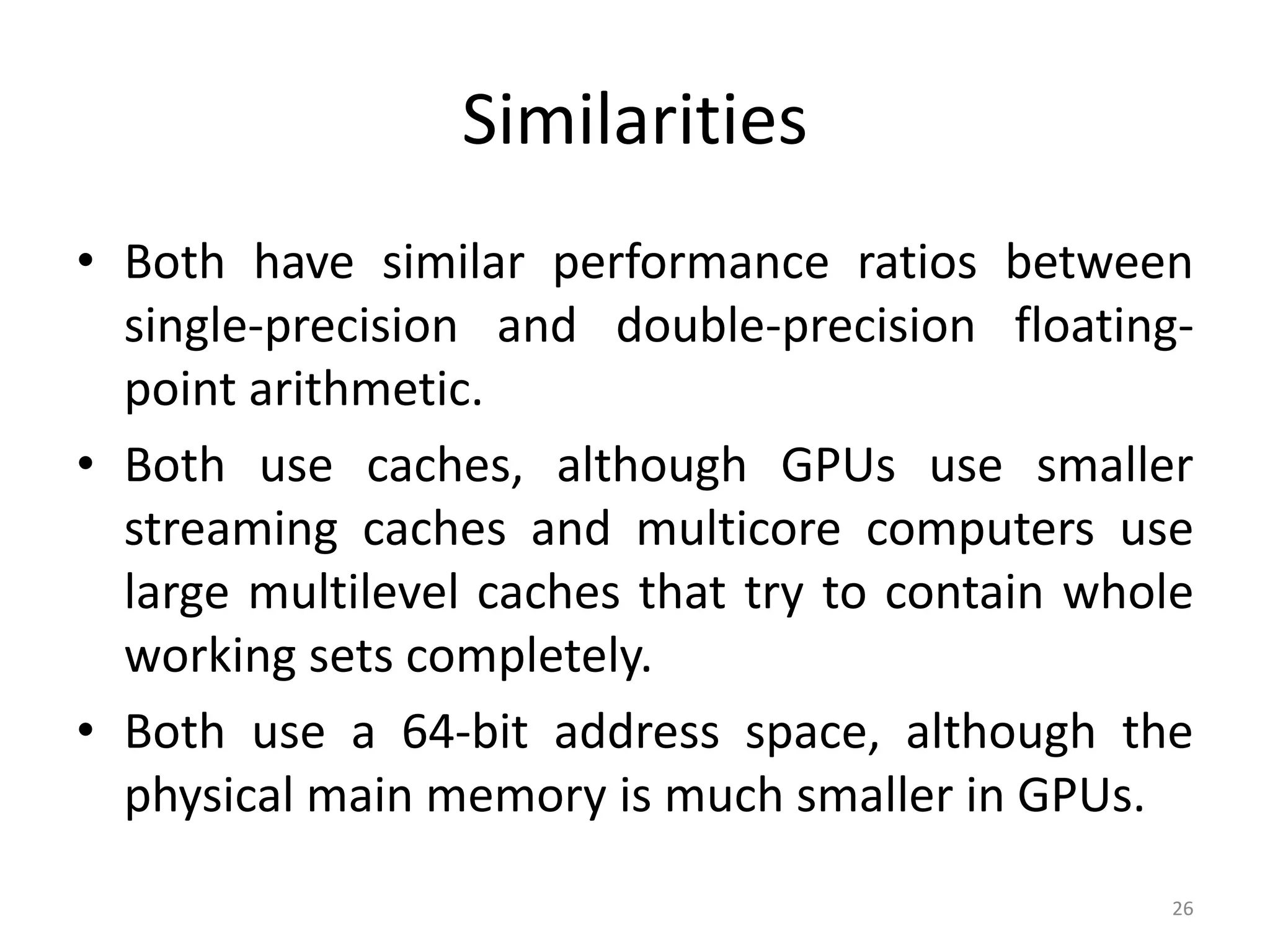
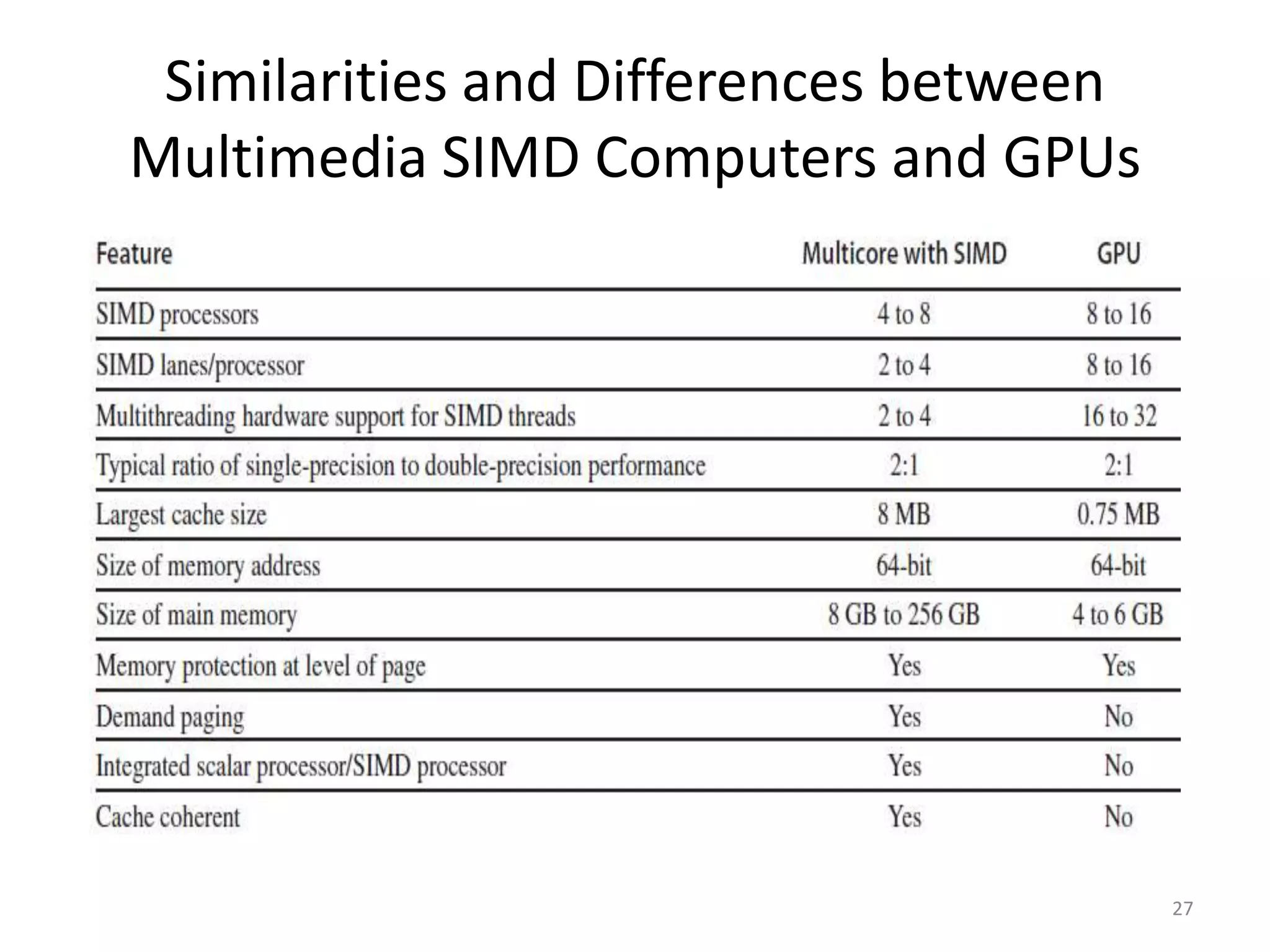
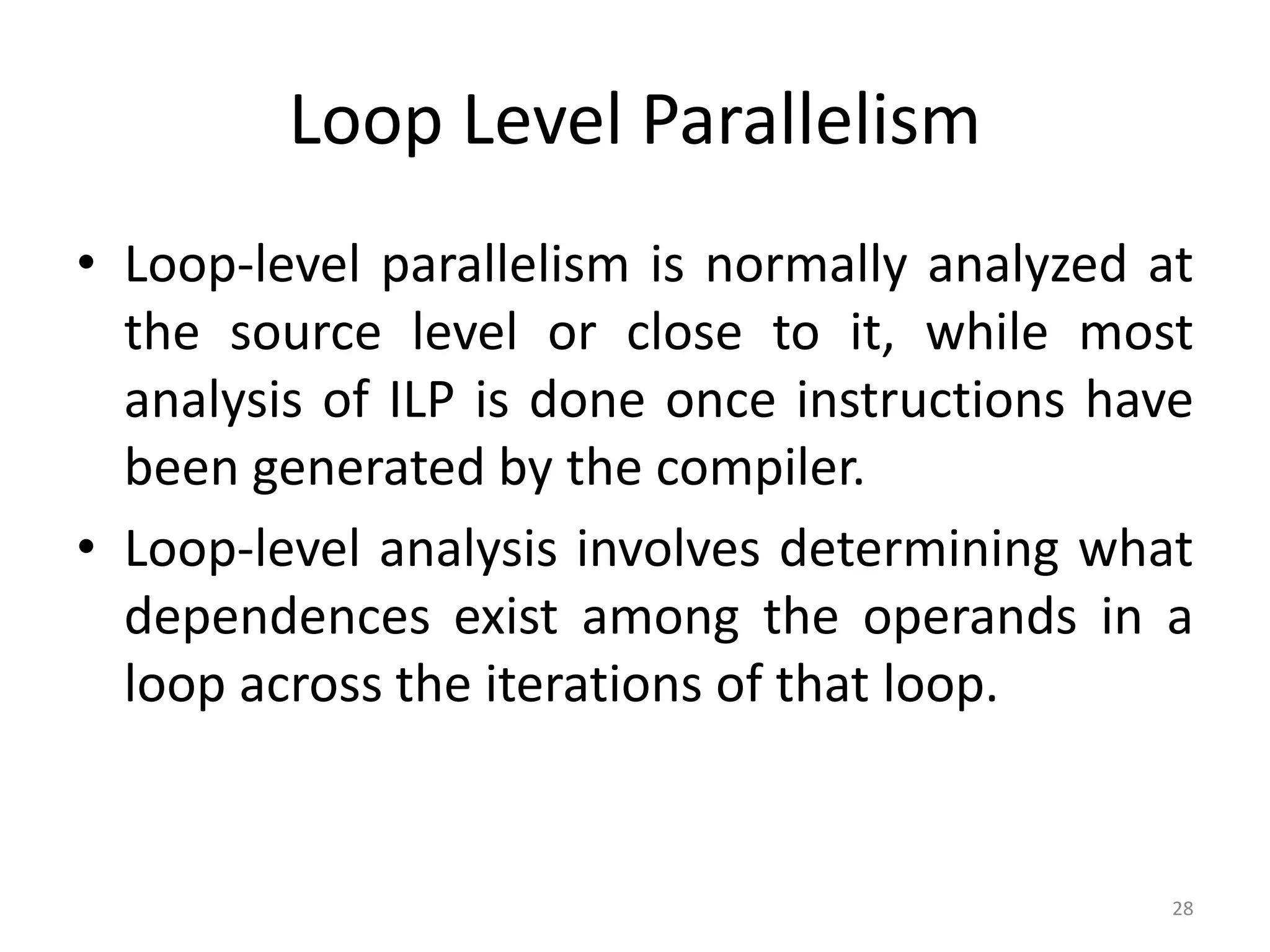
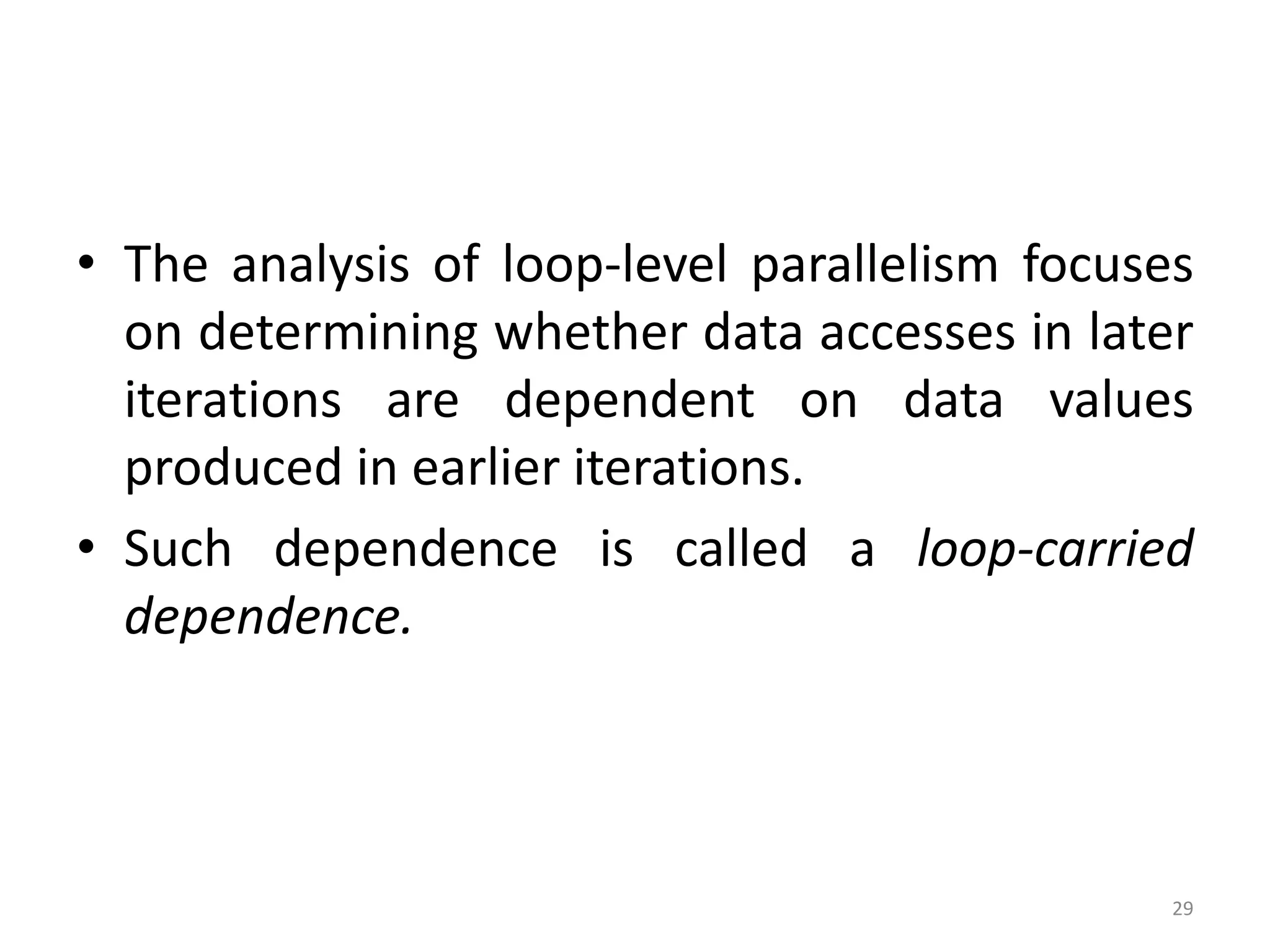
![• e.g. for (i=1; i<=1000; i++)
x[i] = x[i] + s;
• The computation in each iteration is
independent of the previous iterations and
the loop is thus parallel. The use of X[i] twice
is within a single iteration.
• Thus loop iterations are parallel (or independent from
each other).
30](https://image.slidesharecdn.com/advancedcomputerarchitecture-171005055101/75/Advanced-computer-architecture-30-2048.jpg)
![for (i=1; i<=100; i=i+1) {
A[i] = A[i] + B[i]; /* S1 */
B[i+1] = C[i] + D[i]; /* S2 */
}
• S1 uses the value B[i] computed by S2 in the
previous iteration (loop-carried dependence)
31](https://image.slidesharecdn.com/advancedcomputerarchitecture-171005055101/75/Advanced-computer-architecture-31-2048.jpg)
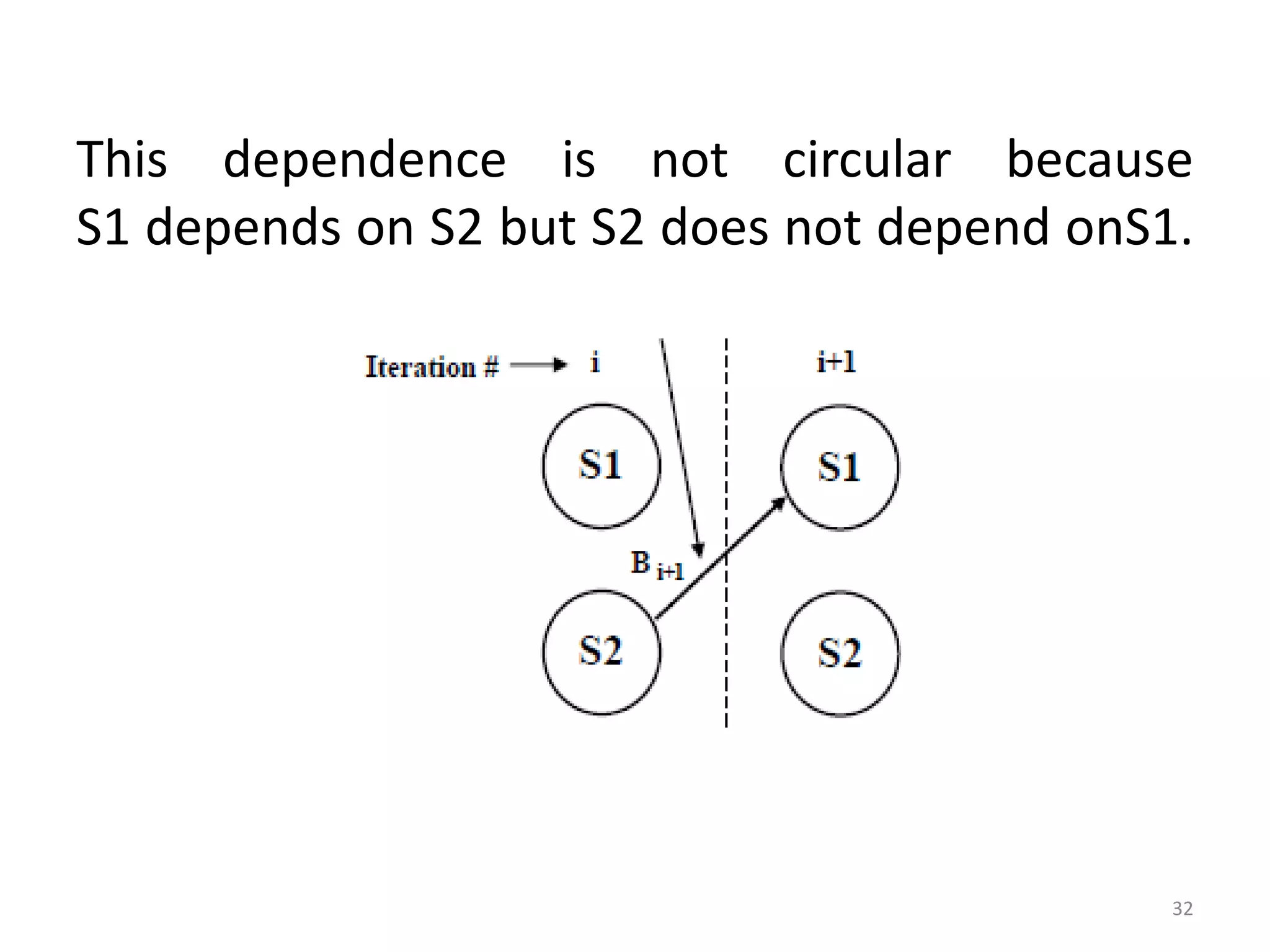
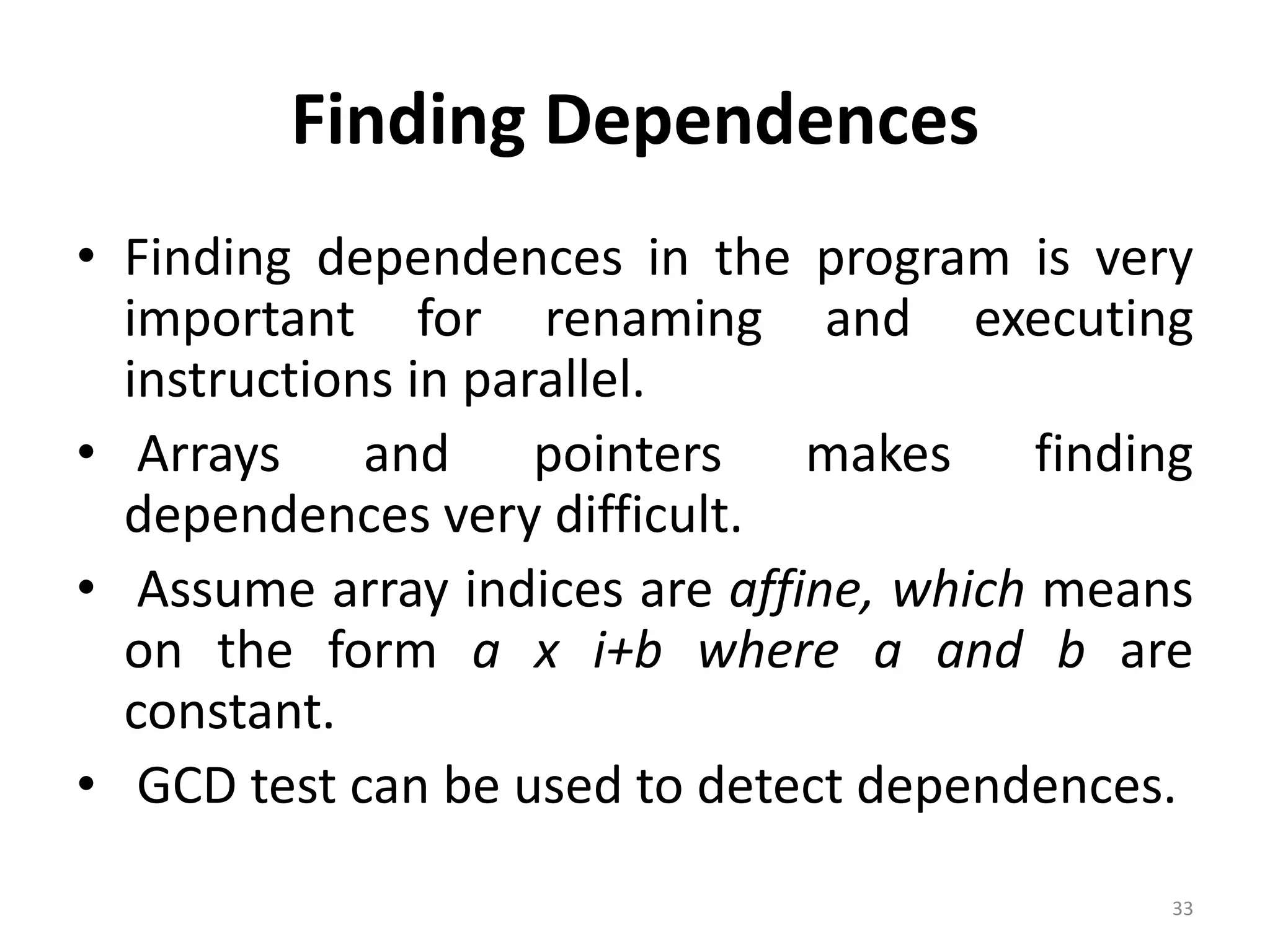
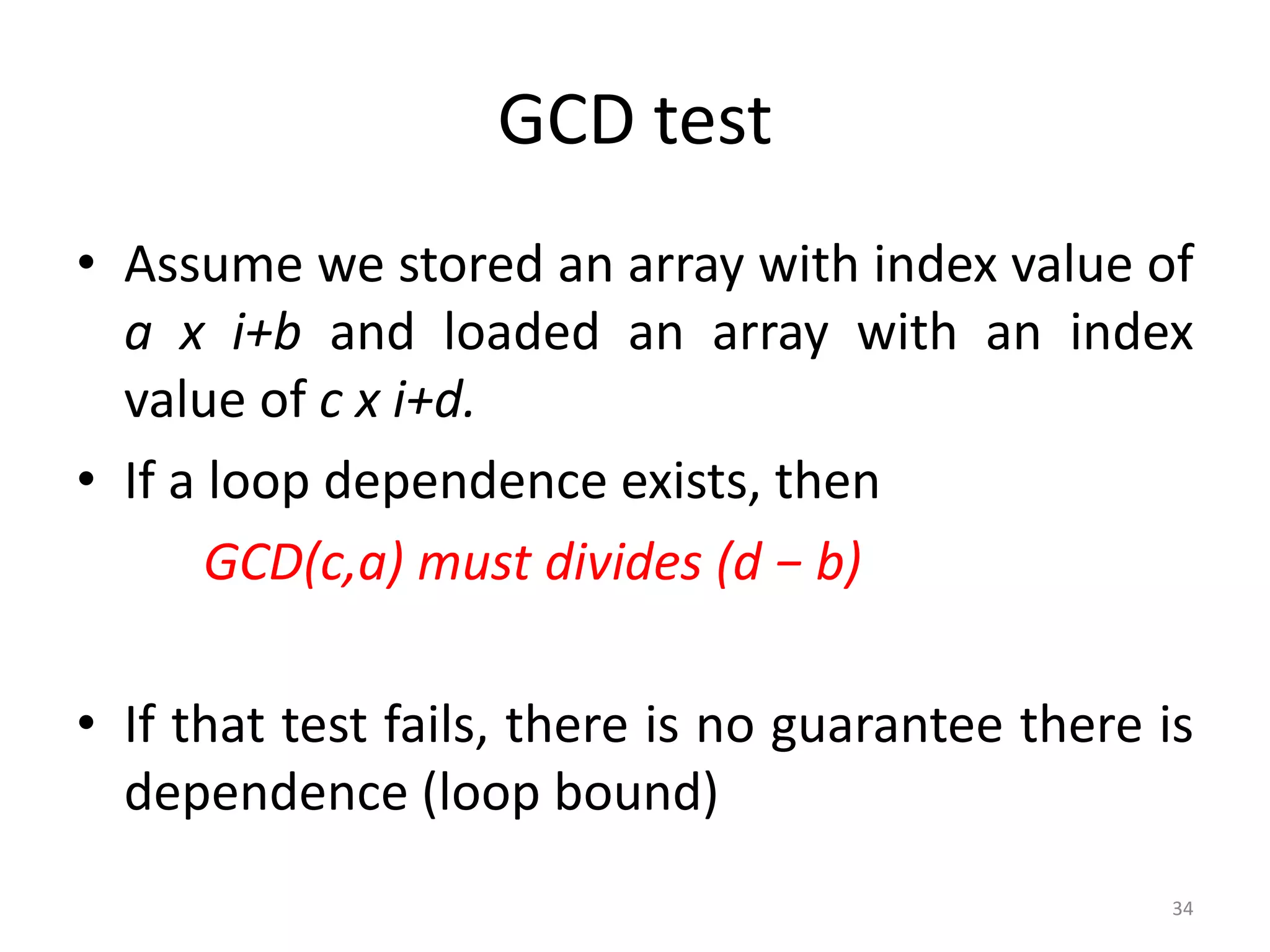
![Example
for(i=1; i<=100; i=i+1) {
x[2*i+3] = x[2*i] * 5.0;
}
a = 2 b = 3 c = 2 d = 0
GCD(a, c) = 2
d - b = -3
2 does not divide -3 ⇒ No
dependence is not possible
35](https://image.slidesharecdn.com/advancedcomputerarchitecture-171005055101/75/Advanced-computer-architecture-35-2048.jpg)